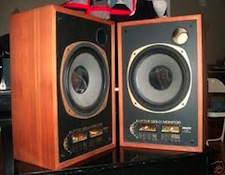

There's an old story about a famous sculptor - it may even have been Michelangelo -- who was asked by one of his admirers how to carve a marble statue of a horse. His answer (paraphrased and translated, of course) was "It's easy; all you have to do is find a block of marble that has a horse in it and then use your hammer and chisel to carve away everything that doesn't look like a horse."
Whether as audiophiles or simply as music lovers, isn't that exactly what we're all trying to do in practicing our hobby?
Just like that sculptor, we're all trying to achieve one very specific thing: For him, it was the marble image of all and only a horse; for us it may be all and only the music or all and only the sound; but whichever the case, what we're trying to do is to separate something we want from the medium that it comes buried in.
In order to do that, we must first figure out exactly what it is that we're "looking" for, and that can be a real problem: How can you find (in our case) "the music" or "the sound" if you've never actually heard it? Unless it's an event or a performance that we actually attended in person and recorded, ourselves, from our own actual listening position, how can we ever know what it's really supposed to sound like? How -- to fuzzy-up the metaphor a little bit -- if we don't know what the specific horse we're trying to "free" looks like, can we ever know what's not a part of it?
A couple of good audio examples of what I'm talking about are two classic (and very much respected) speaker systems; the Dahlquist DQ-10 and the Tannoy "Gold". Because of the way their drivers were arrayed, the Dahlquists did a wonderful job of communicating the space and ambience of a huge concert hall. The problem was that they .....
Continues HERE






